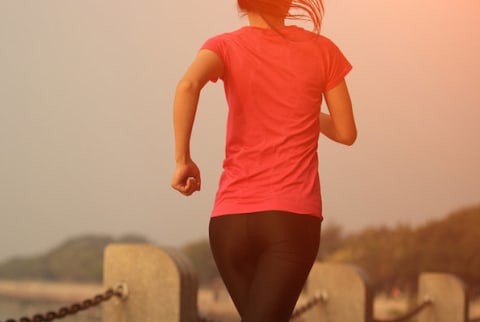Advertisement

It wasn't long after I started running that I began to look for ways to become faster and stronger. I followed tailored training plans, started running in a group, bought new shoes and added more miles. As I increased the miles in my training, I noticed that even though my endurance was improving, my knees still ached and my legs felt tired. I didn't have the power in my lower half to climb hills and finish races with a strong sprint, despite devoting countless training days to uphill runs and speed training.
I made the decision to focus on three additions to my running regimen for 90 days to see if I could observe any noticeable or measurable differences in my runs. After three months of consistently doing these three things, I completely eliminated my knee pain, increased my sprint speed and dropped my average mile pace by 1:30 per mile.
1. Squat
After years years listening to the non-squatting community adamantly proclaim that squats were bad for your knees (and after two knee surgeries), I'd sworn off squats.
But during this 90 day experiment, I learned that squats have been wrongly accused. Squats work by targeting the muscles of the hips, thighs and core stabilizers as well as the supporting tendons and ligaments. This results in improved stability in the hips and knees, as well as increased muscle strength to the quadriceps, hamstrings and gluteus maximus. They also engage the muscles of the core and lower back, resulting in improved running posture.
Squats will make your legs stronger. Stronger legs are more powerful. More powerful legs are faster.
2. Drink water
As cliché as it may sound to a runner, drink water. Years of "hydrating" my body with Moscato and Folgers left me completely unaware of what a properly hydrated body should feel like or what it was capable of. Proper hydration keeps the fluid that protects our joints — especially the sensitive knees of a runner — balanced while also hydrating the surrounding cartilage and ensuring adequate cushioning from the ground and pound of running.
As a runner, I find it very easy to underestimate the amount of water my body needs and overestimate how much water I'm actually drinking. I gave myself a lot of credit for all the water I was drinking, but when I actually tracked it for a week I realized my estimates were completely inaccurate. I started drinking water all the time and never went anywhere without. When I felt I'd had enough water for the day, I drank a little bit more.
A hydrated body is, in its entirety, a more efficient body. A more efficient body is a stronger body.
3. Rest
The most hated word in a runner's world is probably "rest," but rest days are essential not just for the body of a runner, but for the mind as well. During training, muscle fibers are torn and need time to rest so they repair themselves and become stronger. Rest also aids in the prevention of overuse injuries like shin splints, tendonitis and stress fractures.
It also allows for a mental break. The mind is often the most overused part of a runner's body and proper rest can help prevent burnout, mental fatigue and abrupt quitting of a training program. I scheduled rest days and respected them in my training, regardless of how motivated I was or how good I thought my body felt.
A rested body is a higher preforming body. A higher preforming runner's body is faster and stronger.
